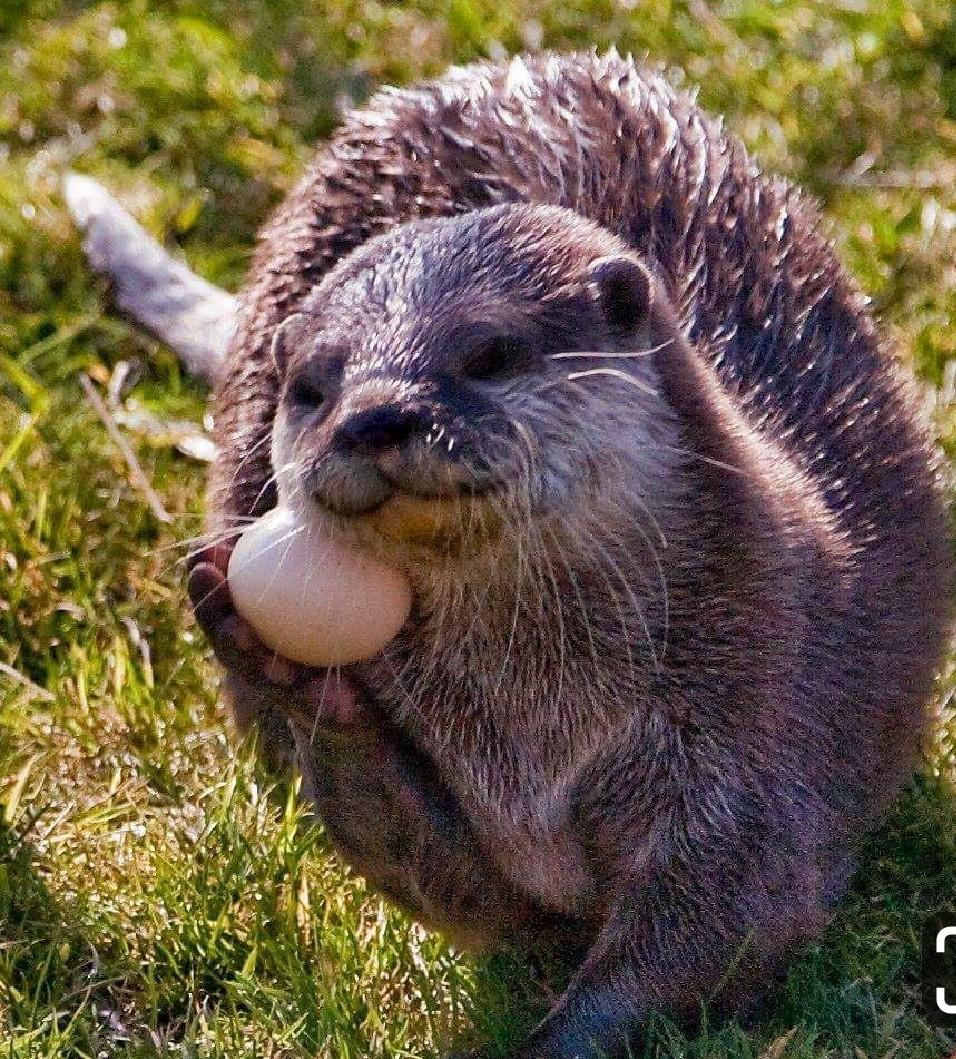No, otters do not lay eggs. They are mammals which give birth to live young.
Otters are fascinating creatures that capture the interest of wildlife enthusiasts and casual observers alike. Known for their playful antics and intelligent behaviors, otters belong to a group of animals known as mustelids, which also includes weasels, badgers, and ferrets.
These semi-aquatic mammals are found near rivers, oceans, and lakes around the world, with species varying from the small clawless otters to the giant river otters of the Amazon. Their diet predominantly consists of fish and shellfish, and they play a crucial role in their ecosystems. With webbed feet and streamlined bodies, otters are excellent swimmers, navigating underwater with grace and agility. Conservation efforts are pivotal for otter survival due to habitat loss and pollution threatening their populations.
Misconceptions About Otter Reproduction
Contrary to some common myths, otters do not lay eggs. They are mammals, and like all mammals, they give birth to live young. A prevalent misconception is that otters, being aquatic animals, might reproduce like some amphibians or fish. This is not the case.
Misunderstandings arise from the fact that otters spend a significant portion of their lives in water, leading to the false belief that they might share reproductive traits with oviparous creatures. In reality, female otters give birth to pups that mature within the womb and are nurtured through a placenta. After birth, otter pups are cared for by their mothers, relying on milk as their primary source of nutrition.
Understanding Otter Biology
The reproductive habits of otters stir curiosity among many wildlife enthusiasts. Otters belong to the category of mammals known as viviparous. This implies that otters give birth to live offspring rather than laying eggs. Unlike their oviparous counterparts in the animal kingdom, female otters nurture their young within their wombs until birth. The gestation period for otters varies by species but generally ranges from 60 to 86 days.
The reproductive cycle of otters commences with a mating season that is often dictated by their habitat. Following successful mating, a pregnant otter will seek a secure and secluded den to deliver her pups. The young are born blind and rely heavily on their mother’s care, learning essential survival skills over time. Consequently, the mother plays a critical role in the early stages of an otter’s life cycle.
Otter Species And Birth Methods
Otters are fascinating semi-aquatic mammals known for their playful nature and remarkable intelligence. Across the globe, several otter species exhibit unique birthing behaviors. Unlike avian creatures, otters do not lay eggs; they give life birth to their young ones. The North American river otter, for instance, births litters averaging one to three pups after a gestation period of about 61-63 days.
On the other hand, the sea otter, residing primarily in the kelp forests of the Pacific Ocean, is known for its nurturing care, often giving birth to a single pup at a time. Giant otters found in South America also exhibit unique reproductive habits, typically birthing two to five pups, which remain in dens dug into riverbanks. These familial groups are maintained through tight bonds and cooperative rearing practices.
Birthing behaviors can be seasonal, with some species like the European otter breeding at any time of the year, while others such as the spotted-necked otter of Africa have their breeding season synchronized with the dry seasons to facilitate the availability of resources. These varied practices emphasize the adaptability and diversity within the various otter populations around the world.

Credit: www.loveotters.org
The Otter Birthing Process
Otters are fascinating creatures whose reproductive process is quite different from egg-laying animals. Contrary to some aquatic animals, otters give birth to live young. Their mating rituals are seasonally timed to ensure the offspring are born during the best time for survival.
After a gestation period that can vary from 60 to 86 days depending on the species, a female otter gives birth to typically one to three pups, although litters can be as large as six. During this period, the expectant mother prepares a den to welcome her new brood.
Nurturing behavior in otter mothers is immediately noticeable post-birth. These devoted parents often carry their pups on their tummy, teach them to swim, and provide a steady diet of prey. The early life stages are critical, and the mother’s protection is vital for the pups’ survival in the wild.
Otters In The Animal Kingdom
Otters hold a unique position in the animal kingdom, especially when we consider their reproductive methods in comparison to other marine mammals. Unlike many aquatic creatures, otters do not lay eggs. They are mammals that give birth to live young, which distinguishes them from egg-laying marine animals such as sea turtles and some species of fish. This live birth is a part of their adaptations for survival in water-based environments.
Otters have evolved to live both in water and on land. Their reproduction process is akin to that of seals, who are their close relatives within the marine world. The young otters, or pups, are born with the ability to swim, but they are often carried on the mother’s belly for initial nurturing. This caregiving strategy highlights the otter’s specialized adaptations to ensure the survival of their offspring in challenging aquatic conditions.
Conservation And Human Impact
Otters are charismatic mammals with a key role in aquatic ecosystems. Their survival is jeopardized by various factors. Pollution, especially chemical contaminants, significantly affects otters by poisoning their waters and food sources. Illegal hunting for their beautiful pelts continues, despite protective laws. Additionally, habitat loss from human development and forestry is a critical problem, leading to decreased prey availability and higher mortality rates.
Conscientious conservation efforts are vital. Initiatives include strict law enforcement to prevent poaching and pollution control measures. Preserving wetlands, river corridors, and coastal areas ensures stable environments. Public awareness campaigns and educational programs advocate for otter conservation, aiming to foster a harmonious coexistence between humans and otters. Lastly, captive breeding and reintroduction programs aid in restoring populations in the wild.
Frequently Asked Questions On Do Otters Lay Eggs
Do Otters Have Eggs?
No, otters do not lay eggs. Otters are mammals, which means they give birth to live young rather than laying eggs. Female otters carry their offspring in the womb before giving birth to typically one to three pups.
What Is The Reproduction Process Of Otters?
The reproduction process of otters involves mating between a male and a female, leading to internal fertilization. After a gestation period usually around 60 to 86 days, the female gives birth to live pups who are nursed until they can fend for themselves.
How Long Do Baby Otters Stay With Their Mothers?
Baby otters, known as pups, usually stay with their mothers for about six months to a year. This period allows them to learn essential survival skills such as swimming and hunting before becoming independent.
Can You Tell If An Otter Is Pregnant?
It can be challenging to tell if an otter is pregnant just by looking, as they do not show obvious signs like some animals. However, veterinarians and wildlife experts may use ultrasound or other methods to determine pregnancy in otters.
Conclusion
Wrapping up, otters are fascinating creatures with unique behaviors, but laying eggs is not among them. These mammals give birth to live young, nurturing them with care. Remember, exploring wildlife enriches our understanding of nature’s incredible diversity. Share this insight and keep the curiosity alive!

